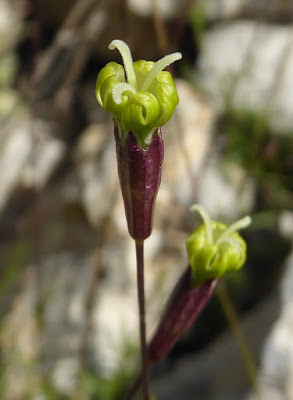With our wide interest in natural history, we knew there would be plenty to do, even if bird migration failed to produce the goods - and bird migration is really what Scilly is all about in the autumn. As it turned out, we hit things pretty nicely, with a good mix of very rare birds around, plus a fair share of regular migrants to keep us occupied. Rare visitors that had been blown off course from North America included Yellow-billed Cuckoo, Red-eyed Vireo, White-rumped Sandpiper and Blue-winged Teal - a lovely cluster of New World species! Other highlights in the bird line included two Pink-footed Geese (a long way from wintering in Norfolk!), Eurasian Spoonbill, Spotted Crake, Wryneck, Common Raven, Greater Short-toed Lark, Blue Rock Thrush, a good number of Yellow-browed Warblers and a very confiding Snow Bunting.
A combination of British autumnal weather, bird behaviour and human behaviour often makes bird photography difficult on Scilly, so I didn't take much in the way of bird photos, but you'll find a couple of videos of the remarkably confiding Blue-winged Teal and Spotted Crake on my Facebook page.
 |
| Eurasian Wrynecks are the weirdest of woodpeckers. Cryptically coloured and easily passed off as a piece of wood, this bird looks perfectly at home on the arm of a bench on Peninnis Head. |
 |
| As we left the house in Hugh Town, St Mary's one morning, this Rock Pipit was mooching around in the road right outside the front door! |























































